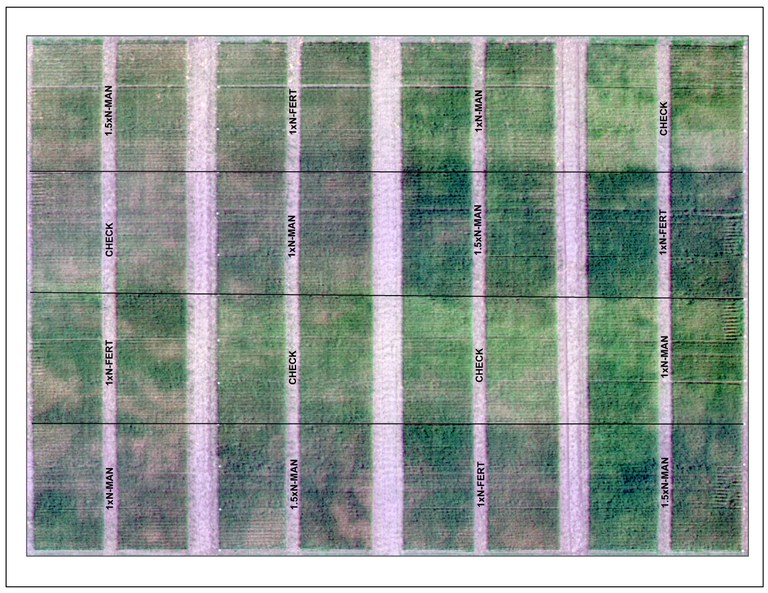Manure as a source of N for wheat and the effect of supplemental N on wheat protein content
Low soil nitrogen (N) availability is the main limiting factor for yield and kernel quality in hard red spring wheat (HRSW) production and consequently nitrogen fertilization is one of the largest single expenses to grow HRSW. The N fertilizer cost is causing some producers to look for alternative and more affordable sources of N for wheat production. Manure is an alternative fertilizer, which can supply all the required nutrients at recommended levels for HRSW production. However, research done in North Dakota has shown that spring applied solid manure results in slow mineralization and consequently delayed N release, which can lead to lower yields and/or lower protein content in the kernel.
In the spring of 2016, we started a field trial at the CREC to test the response of HRSW to fresh beef feedlot manure and commercial fertilizer. The following treatments were applied to the main plots (60ft wide by 45ft long):
- 1.0 X N- Recommendation as manure (1xN-MAN)
- 1.5 X N-Recommendation as manure (1.5xN-MAN)
- 1.0 X N-Recommendation as commercial fertilizer (1xN-FERT)
- CHECK (see picture below).
The main plots were then split into two subplots (30ft wide by 45ft long). One of the subplots received supplemental N at planting and the other one at boot stage. The subplots were then split into three sub-subplots (30ft wide by 15ft long), where we applied rates of N (0, 20, and 40 lbs/ac) at either planting or boot stage.

Wheat (cultivar Faller) was planted on May 3, 2016, at the rate of 1.4 million PLS/ac. On the same day, we applied the supplemental N due at that time. The remaining supplemental N was applied on 06/23/2016. The plots were harvested on August 17, 2016.
In summary, wheat fertilized with fresh beef feedlot manure showed similar yields (2-3 bu/ac more; Figure1) than wheat fertilized with urea. Although there was no interaction between the fertility treatments and supplemental N-rates, the results suggest that when using manure as fertilizer a supplemental 20 lbs of N/ac would be advisable to increase/maintain protein content above 14% (Figure 2), avoiding that way protein discounts. More years of data are necessary to verify the findings of this study.
Figure 1. Wheat yield response to manure and urea used as sources of N plus supplemental N-rates. Bars with the same letter are not significantly different (Tukey Test, α=0.05).
Figure 2. Wheat protein content in response to manure and urea used as sources of N plus supplemental N-rates.
Regarding recommendations about using either manure or commercial fertilizer for wheat production, there are many factors (fertilizer cost, manure application cost, manure nutrient value to subsequent crops, wheat price, protein discounts and premiums) that play a role on that decision. Therefore, I suggest that such recommendations should be done on a year by year basis, taking into consideration the most current information for those factors.
Paulo Flores, Ph. D.
Nutrient Management Specialist


